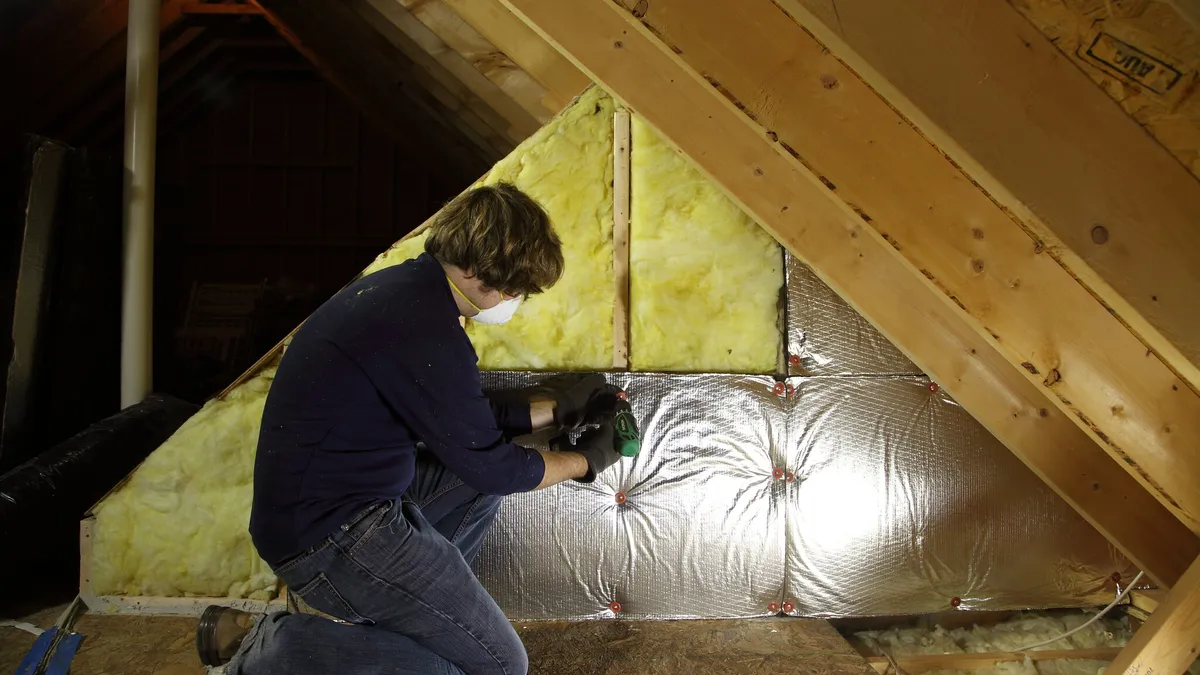Dive Brief:
- Bipartisan legislation in the U.S. House of Representatives would authorize a national approach for residential water heaters to be utilized as demand response resources, in a bid to strengthen electric grid resilience and flexibility. H.R. 7962 was introduced by Rep. Debbie Dingell, D-Mich.
- The bill would direct the U.S. Department of Energy to consider requiring residential water heaters be manufactured with hardware and software capabilities to moderate their energy use in response to incentive payments or changes in the price of electricity.
- Water heater manufacturers support the bill, but at a House Committee on Energy and Commerce hearing on Wednesday some lawmakers and groups wary of government overreach voiced privacy concerns in mandating the new capabilities.
Dive Insight:
Multiple states, including California and New York, have already passed measures to ensure some water heaters are manufactured to be demand-response capable. Manufacturers say they prefer a national standard to the “quagmire” of varied compliance requirements.
“This provision represents an opportunity to establish a national standard for a narrow product class of innovative water heating technology,” Joshua Greene, corporate vice president of government and industry affairs at water heater manufacturer A.O. Smith, told lawmakers.
Greene was also testifying on behalf of the Air-Conditioning, Heating and Refrigeration Institute, which represents manufacturers more broadly.
The bill would authorize DOE to issue a final rule by Dec. 31, 2024, requiring some residential electric water heaters to be capable of participating in utility demand response programs, if the Secretary of Energy concludes it is “technologically feasible and economically justified.” The bill would also adjust some definitions of commercial and residential water heaters, to reflect recent innovations.
“Technology and innovation in our industry have outpaced statutory definitions for our products,” Greene said. The water heater bill would “bring much needed business certainty for manufacturers and their customers.”
Conservation advocates also support the measure. There are more than 53 million electric water heaters in the U.S. and each could act as a battery for load shifting, peak shaving, or to integrate renewables, according to the Regulatory Assistance Project.
The proposed bill will “ensure a common communications protocol, easing the pathway to large-scale demand and significant cost savings for consumers,” Andrew deLaski, executive director of the Appliance Standards Awareness Project, told lawmakers. “A national requirement would preempt additional states from setting their own requirements and promote consistent national markets.”
Some concerns about new water heater requirements were raised by Republican lawmakers and consumer advocates.
Rep. Fred Upton, R-Mich., described demand response as “a capability that allows a grid operator to remotely monitor and control residential appliances to reduce electricity demand,” and said a bill mandating it “raises serious privacy concerns that I don't think are going to go over very well with consumers.”
“It shouldn't be mandated by the federal government. There are very real privacy issues here,” Ben Lieberman, a senior fellow at the Competitive Enterprise Institute, said at the hearing. “These should always be decisions made by the homeowner and never the government. It's really as simple as that.”
The bill would not mandate participation in demand response programs, but instead ensures certain units have those capabilities.
“Sure, we can save energy if utilities can shut the appliances on and off. But that's not what consumers want,” Lieberman said.
Utility data from grid connected devices has been the subject of lawsuits in the past, though courts have sided with utilities. Customers who sign up for demand response programs do voluntarily allow utilities to modify their appliance energy demand.
Lieberman also spoke against H.R. 7947, the "Weatherization Enhancement and Readiness Act of 2022," which would expand the federal Weatherization Assistance Program by increasing the limit states can spend weatherizing individual homes from $6,000 to $12,000.
“I just don’t believe we are getting very much bang for the buck. In particular, the weatherization program is one in which economists and others have questioned whether the expenditures exceed the benefits,” Lieberman said. “Most homeowners take reasonable steps on their own to prevent wasting energy, and thus the marginal benefit of government programs is limited.”
The weatherization bill would also boost the funds available to make essential repairs to a home, “which are necessary for safe, effective and durable weatherization improvements,” deLaski said. About 20% of households are currently unable to participate in the weatherization program because of structural issues with their home, he told lawmakers.
“The reforms in this bill are urgently needed to make sure that the lowest-income households — many of them rural, many people of color, many elderly — that have the greatest need of assistance can fully benefit from the weatherization program,” he told lawmakers.















